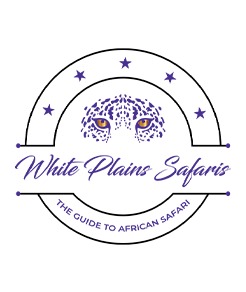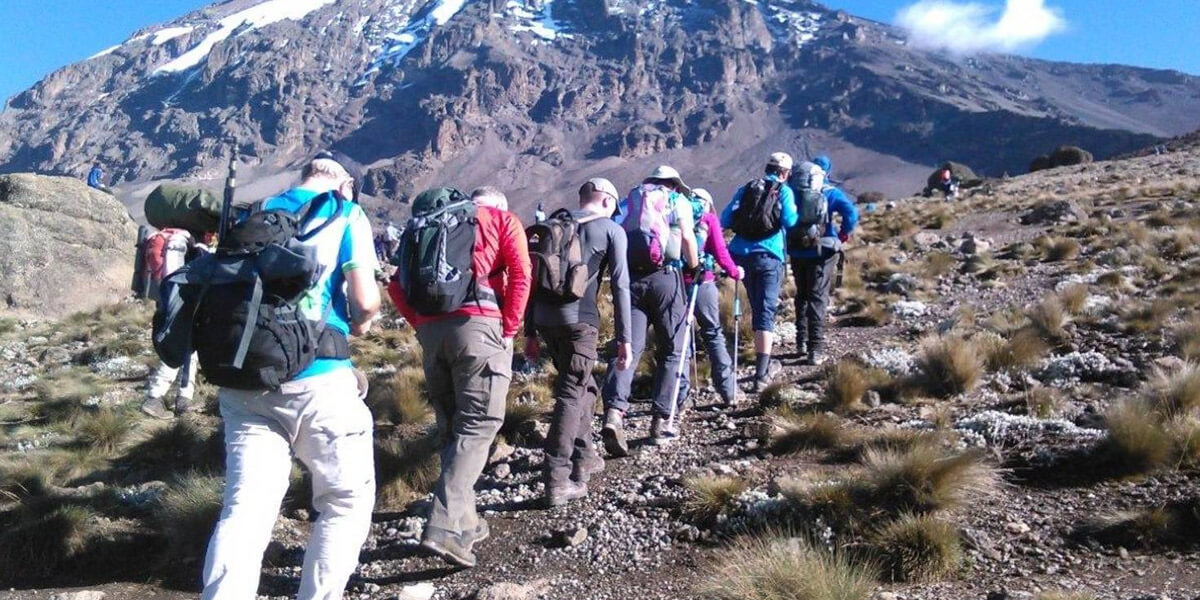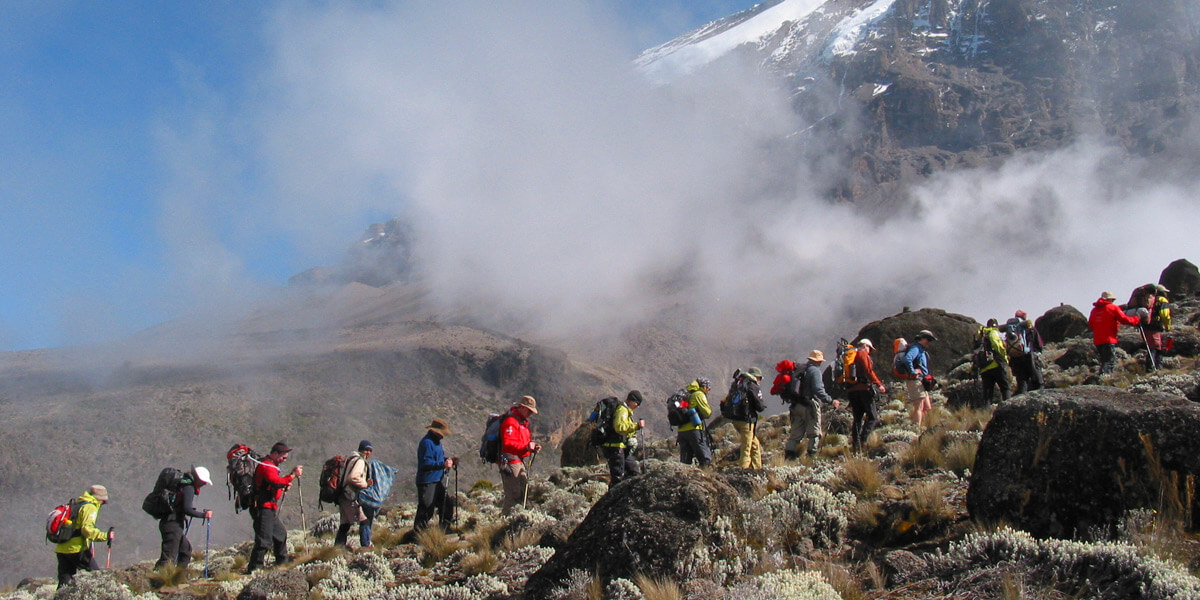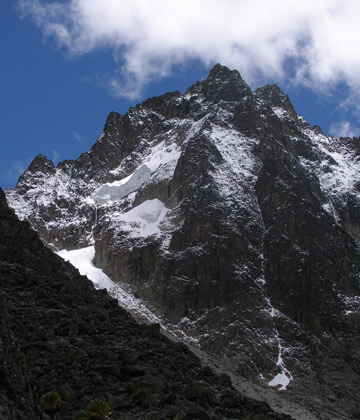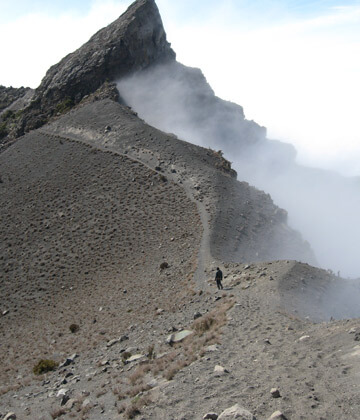10 Days Lemosho Route
The Leomosho route avoids the crowds on the early part of the Machame route and over 8 days, you have a fantastic journey and a great chance of summiting successfully. The climb begins at Londorossi Gate, at an altitude of 2360 metres, with an approach far to the west of the mountain. It passes through majestic rainforest where some of the region’s most unique wildlife can often be seen. The route continues up to the mountain’s third summit at Shira Ridge.
From there you will cross the famed Shira plateau and see the awe inspiring Shira Cathedral before reaching Shira camp on the main Machame route on day three. This allows a few days of quiet climbing overlooking some amazing terrain before taking the more heavily travelled route to the summit. After reaching the summit, you will descend by the Mweka trail, rather than retracing your steps along the ascent route.
Trek Highlights
The Lemosho route is a good eight day hike for those who have not trekked much at high altitudes, with an effective extra day’s acclimatisation, giving a better success rate.
Experienced and already acclimatised mountaineers may opt for the more difficult 7 day ascent along the Lemosho route.
It was introduced by the park to handle increasing numbers of visitors and it is true to say that Lemosho has a slightly easier gradient through the forest and onto the Shira plateau.
However, the gate at Londorossi is further away than Machame Gate so on the first morning you have to drive for about three hours to register at the Londorossi Gate and then drive a little further on to the start of the trek.
Included
- Transport
- Trip Crew
- Meals and Mineral waters
- Accommodation
- Park Entrance Fee
- Camping Equipment
- All camping fees
- Rescue fees
- Government taxes
- Pickup and drop off to Airport
Excluded
- International Flight
- Airport Tax
- Items of Personal Nature
- Visas
Trekking Itinerary
Day 1
Arrival
All trekkers need to organise their own flights to Kilimanjaro International Airport (JRO). From JRO we will arrange a private transfer to your hotel. That night or early the next morning you will meet your local guide or representative and have a full pre-climb briefing.
Day 2
Londorossi Gate to Mti Mkubwa Camp
4WD transfer to Londorossi Park Gate for registration. Our porters prepare and pack our supplies and luggage before we start our ascent along the forest trail to Mti Mkubwa (Big Tree) campsite at 2895m. We will stay here overnight.
Day 3
Mti Mkubwa Camp to Shira 1 Camp
Our journey continues eastwards across the Shira Plateau with spectacular views of Shira Cathedral. We cross moorland meadow to reach Shira 1 Camp for dinner and overnight camping at 3500m. By now we will be able to see the stunning glaciers of the Western Breach. It will be colder tonight than the previous night with temperatures possibly falling below freezing.
Treated Water on safari.
Day 4
Shira 1 Camp to Moir Hut
We leave the forest behind now and the trail gets steeper as it enters the moorland zone. A gentle grade walk takes you across the high altitude Shira Caldera to Moir Hut with fabulous views of Arrow glacier. We will camp here for the night at 4200m.
Day 5
Moir Hut to Barranco Camp via Lava Tower
Today we will climb up to 4600m to the base of Lava Tower for lunch and acclimatization. This will be our toughest day so far and you may, for the first time, feel the altitude. After lunch we will descend again by almost 650m to Barranco Camp, following the “walk high, sleep low” golden rule of acclimatisation. Our descent to Barranco Camp takes about 2 hours and offers great opportunities to take some beautiful photographs of the Western Breach and Breach Wall. The camp is situated in a valley below the Breach and Great Barranco Wall.
Day 6
Barranco Camp to Karanga Camp
A short but fun day, starting with a scramble to the top of the Great Barranco Wall. We then traverse over scree to the Karanga Valley (3930m) beneath the icefalls of the Heim, Kersten and Decken Glaciers. We will stay overnight at Karanga campsite.
Day 7
Karanga Camp to Barafu Camp
We leave Karanga campsite behind to meet the junction connecting with the Mweka descent trail. From here we continue up to Barafu Camp. You have now completed the Southern Circuit, which offers views of the summit from many different angles. At camp, we can rest, enjoy dinner, and prepare for the summit day. The two peaks of Mawenzi and Kibo are to be clearly seen from this position.
Day 8
Barafu Camp to Summit to Mweka Camp
You will be woken around 23:30 with tea and biscuits. We start our trek to the summit between the Rebman and Ratzel glaciers through heavy scree up to Stella Point on the crater rim. This is the most mentally and physically challenging part of the trek. At Stella Point (5732m), we will stop for a short rest and hopefully be in time to witness the magnificent sunrise (weather permitting).
We are now only an hour away from the summit, Uhuru Peak (5895m), the highest point on Mount Kilimanjaro and the continent of Africa. From the summit, we descend down to Mweka camp site, via Barafu for lunch. Trekking poles will be needed for the loose scree going down to Mweka Camp (3100m). Later in the evening, we will enjoy our last dinner on the mountain and a well-earned sleep.
Day 9
Mweka Camp to Mweka Gate
Your final day on the trek, departing after breakfast we descend a further 1300m to the Mweka Park Gate to pick up your summit certificates from the Park Headquarters. Transfer to your hotel.
Day 10
Departure
After a much needed nights rest, we will bid you goodbye.
Safari Booking Form
Recommendation
Related Kilimanjaro Travel Packages
Kilimanjaro Travel Tips
Kilimanjaro is one of the most iconic mountains in the world! We have developed our own unique itinerary along with offering high quality treks on Kilimanjaro.
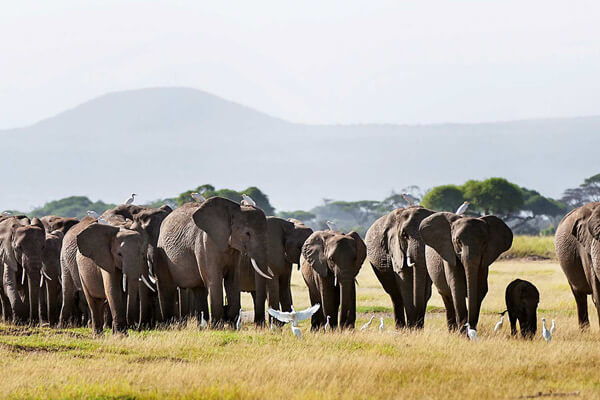
Best Time to Visit Kilimanjaro
The peak-climbing season is from August to mid-October, and they certainly are the best months for such a challenge.
Read More
Kilimanjaro Packing List
A large pack: Durable and waterproof, for carrying most of your essentials. Typically, a porter carries this.
Read More
Kilimanjaro Gear List
Good news is, all treks on Kilimanjaro are organized tours where you'll have porters to carry most of your equipment.
Read More
Immunizations and Health
There is no requirement to have any vaccinations for visitors to Tanzania unless the climber will have recently
Read More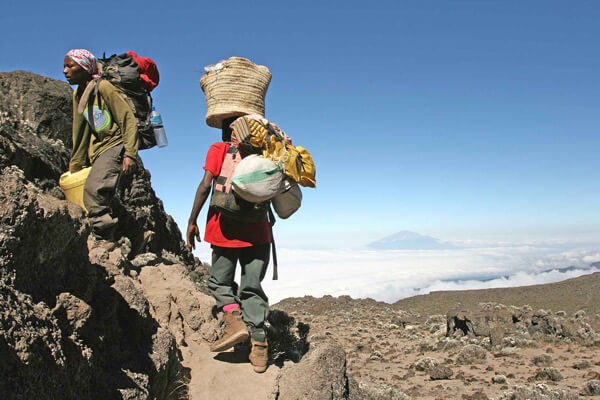
Kilimanjaro Guides
Unless you specifically request mountain guides of any given nationality, Uhuru Trails by White Plains Tours
Read More
Kilimanjaro Food
Our cooks use fresh, locally grown food whenever possible. We choose the ingredients carefully to ensure that
Read More
Kilimanjaro Porters
Kilimanjaro porters are at the bottom of the food chain. A cut-throat price war ranges on the slopes of Mount Kilimanjaro
Read More
Kilimanjaro FAQs
Drones are illegal to use in Tanzania without a license and special permit. In order to get a drone permit
Read More
Kilimanjaro Private Toilet Tents
Once you decide on a tour operator for your Kilimanjaro Climb, you will have the option to add on additional things
Read More
Kilimanjaro insurance
Climbing Mount Kilimanjaro is a real challenge, so to set yourself up for success you need to ensure you
Read More
Kilimanjaro Electronic Gadgets
On your way to the Kilimanjaro, you don’t want to carry needless weight. while Kilimanjaro porters carry
Read More
Kilimanjaro Altitude Sickness
Almost every climber will experience some of the effects of altitude. Despite what you may have heard,
Read More
Kilimanjaro Tipping
These Tipping Guidelines are intended to assist you in determining a proper tip amount for your guide
Read More
Kilimanjaro Weather and Climate
Daytime temperatures range from 50 to 70 F at altitudes from 7,500', where we start the climb
Read More
Tailor-Made Tour
First time on Safari?
Let’s start designing your Holiday
A new way to create your safari. African travel is opening up to the world. Create your first trip here and let us know what you think. You can trust our insightful team of travel experts to design a first time safari that experience in Kenya, Tanzania, Uganda and Rwanda….
